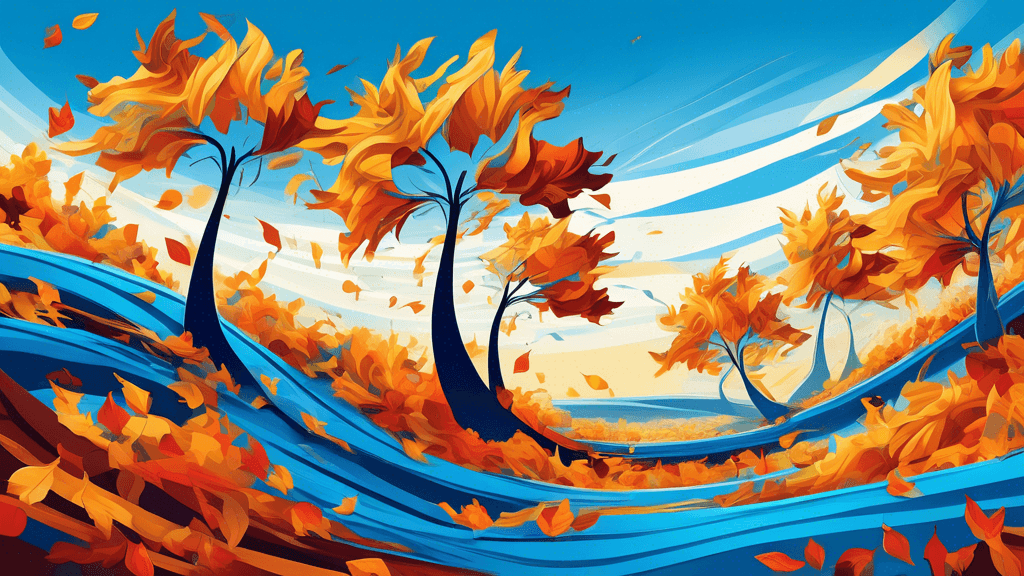
Capturing the Whimsy: How Wind Shapes Nature
Share
The Art of Capturing Whimsy: How Wind Shapes Nature
When we think of wind, we often consider its immediate effects: the cool breezes of summer evenings or the harsh, biting gusts of a winter storm. But beyond these momentary experiences, wind holds a transformative power over nature, creating scenes of unexpected beauty and whimsy. For photographers, artists, and environmentalists, understanding and capturing the influence of wind can unlock a new dimension of creative expression and appreciation for our natural surroundings.
Understanding the Wind's Artistic Touch
Wind is a sculptor of nature's vast and varied canvas. It carves out patterns on landscapes, bends trees and plants into flowing forms, and it can transform a simple scene into a dynamic snapshot of natural forces at work. But how exactly does wind shape the natural world, and what makes its influence so uniquely captivating?
The Role of Wind in Natural Landscapes
Wind shapes ecological and geological structures in several profound ways:
- Erosion and Deposition: Wind carries sand and other particles that erode rock formations and sculpt dunes, leading to changing landscapes that tell a story of their own resilience and transformation.
- Plant Growth: The constant pressure of wind influences the growth patterns of plants and trees, often resulting in bent or twisted forms that embody the wind's direction and strength.
- Animal Behavior: Many species have adapted to windy conditions, and capturing such interactions can highlight a compelling narrative of survival and adaptation.
How Artists and Photographers Capture Wind's Effects
Photographers and artists observe and immortalize the ephemeral shapes and patterns created by the wind. Techniques vary from long exposure photography, which can turn a windy scene into a smooth, surreal landscape, to more direct approaches that capture the raw power and immediacy of a gust.
Notable photographers such as Ansel Adams and Michael Kenna have masterfully captured the whimsy and drama of wind in their work. They have demonstrated that attention to composition, timing, and perspective can unveil the profound impact of wind on the natural world.
Wind's Influence Through the Lens
Let’s explore how the wind can be captured through the lens to create stunning artwork and meaningful environmental messages:
Dynamic Landscapes
Consider the sweeping dunes of the Sahara or the rugged cliffs of the Irish coast, shaped by centuries of wind erosion. The key to capturing these landscapes is to observe how the wind interacts with the environment at different times of the day and year.
Vegetation's Dance with the Wind
Plants respond to the wind in a dance of survival and adaptation. Capturing this dance requires patience and timing to see how the wind molds flora over time. Techniques like time-lapse photography can be particularly effective in showing this gradual, yet persistent, transformation.
Animal Interactions with Wind
Animals, from the majestic birds soaring against the wind currents to the small insects that navigate breezy conditions, all have adapted to their windy environments. Documenting these interactions can provide insights into the resilience of wildlife and the intricate balance of ecosystems.
Why Understanding Wind Matters
Appreciating and documenting the effects of wind goes beyond artistic expression. It plays a critical role in environmental awareness and conservation. By showcasing how landscapes and species are shaped by natural forces, artists and photographers can inspire a greater respect and urgency for preserving these environments.
Contributing to Environmental Conservation
Every image and piece of art that highlights the beauty and significance of wind-affected landscapes helps raise awareness about the natural world's fragility and resilience. It calls on viewers to not only appreciate the visual aesthetics but also to engage in efforts to protect these vulnerable ecosystems.
Concluding Thoughts
Wind is not just a force; it's a craftsperson, shaping the natural world in ways that are both subtle and profound. Capturing this influence requires a blend of technical skill, environmental understanding, and a deep sense of curiosity. Whether you are a photographer, an artist, or someone passionate about nature, viewing the world through the lens of how wind shapes it can open up a new realm of creative and conservation potentials. So, the next time you feel a breeze, consider the artistry at work and think about how you can capture or contribute to its story.
What will you create or protect when you next observe the wind’s art? How will you share it with the world?





